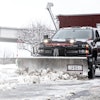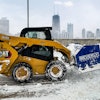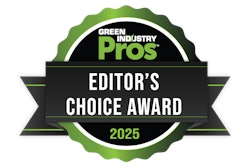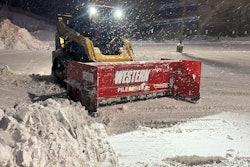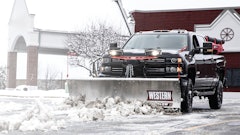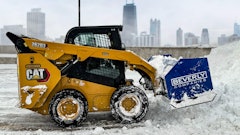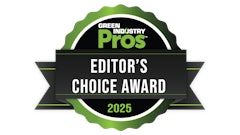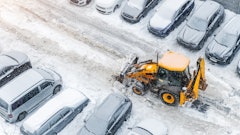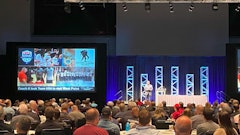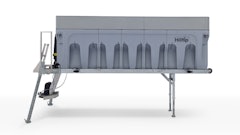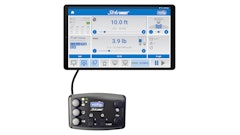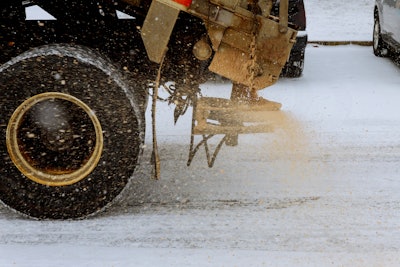
Every winter, transportation agencies across North America deploy more than 25 million tons of de-icing materials to keep roads safe and accessible. Most of these materials are procured through public-sector bidding processes that prioritize the lowest unit cost, making rock salt the overwhelming default.
But this reliance on upfront price masks a much larger truth: what appears inexpensive on paper often comes at a significant long-term cost. When accounting for infrastructure decay, vehicle corrosion, environmental damage, and even traffic congestion from road repairs, rock salt is arguably one of the most expensive choices for winter maintenance.
What Does De-Icing Really Cost?
The true cost of de-icing lies in what municipalities, taxpayers, and ecosystems pay long after the snow has melted. These costs are rarely included in bid evaluations or procurement frameworks, but are very real — and very large.
There are six hidden cost categories to consider.
- Infrastructure Damage — Chloride ions accelerate the corrosion of steel rebar in concrete, bridges, and guardrails. The resulting damage is valued at $1,400+ per ton of rock salt used (Transportation Research Board).
- Pavement Degradation — Salt infiltration causes freeze-thaw cycling, potholes, and surface cracking, adding over $600/ton in road repair costs (Michigan Tech Research Institute).
- Vehicle Corrosion — Exposure to salt damages vehicle underbodies, brake lines, and suspension components, costing drivers and fleet managers an average of $70+/ton (AAA Foundation).
- Environmental Harm (Terrestrial) — Sodium and chloride disrupt soil chemistry, harm vegetation, and permanently reduce soil fertility. Estimated damage: $90/ton. Many of these effects are irreversible.
- Freshwater Ecosystem Impact — Chloride-laden runoff degrades lakes, rivers, and aquifers, threatening aquatic life and drinking water safety. Restoration efforts cost approximately $200/ton and cannot fully reverse biodiversity loss (EPA, USGS).
- Traffic Disruptions from Repairs — Damaged roads require lane closures and lengthy repair work, causing congestion, lost productivity, and fuel waste. These indirect costs are rarely tracked but can exceed $1,000 per lane-mile per event, adding further strain on urban economies (FHWA).
Total Cost of Rock Salt: $2,600+/ton.
More than 35 times its initial purchase price — most of it passed on invisibly to taxpayers, motorists, and ecosystems.
 STAR's Tech provides a line of de-icer products made of marine-waste starfish.STAR's Tech
STAR's Tech provides a line of de-icer products made of marine-waste starfish.STAR's Tech
Not All De-Icers Are Created Equal
With growing awareness of long-term impacts, municipalities are evaluating de-icing materials using a total cost of ownership (TCO) framework. Below is a comparative look at several commonly used and emerging options.
Material | TCO Estimate | Melting Performance | Corrosion Risk | Environmental Risk | Indirect Cost (i.e. maintenance) |
|---|---|---|---|---|---|
| Rock Salt (NaCl) | Very High ($2,600+/ton) | Moderate | High | Very High | High (vehicle damage) |
| CaCl₂ / MgCl₂ | High ($1,865/ton) | High (effective to -20°F) | High | High | High (vehicle damage) |
| Beet Juice Blends | Moderate – High ($1,520/ton) | Moderate | Moderate | Moderate (eutrophication risk) | Medium (clean-up cost) |
| Acetates (e.g. Potassium Acetate) | High ($2,266/ton) | Low–Moderate | Minimal | Moderate (oxygen depletion risk in water bodies) | Low |
| Sand | High ($2,000/ton) | Low (no melting) | None | Low (dust/runoff burden) | Very High (clogs drains) |
| Heated Pavements | Very High ($5,000/ton equivalent) | High (on-demand) | None | Very Low | Moderate (energy consumption, very high repair cost) |
| Starcrush Premium Solution | Very Low ($465/ton) | Moderate –High | Minimal | Low | Low (minimal corrosion and create damages) |
*Starcrush Premium Solution refers to bio-based, corrosion-inhibiting formulations designed to reduce lifecycle damage while maintaining effective performance. It may qualify for carbon credits based on downstream emissions reductions (e.g., reduced asphalt consumption), with estimated offsets of up to ~$25/ton — positioning it among the few de-icers with potential net-positive environmental value.
Smarter Cities Are Already Adapting
Public agencies are increasingly recognizing that low-bid procurement strategies often result in higher lifecycle costs. Across the U.S. and globally, many are now adopting smarter, more sustainable winter maintenance practices.
- Minnesota DOT, “Smart Salting” Program — One of the most referenced models, MnDOT’s program uses pre-wet brines, liquid-only treatments, and real-time road condition monitoring (RWIS) to drastically reduce salt use by up to 70 percent in some districts. This has led to measurable reductions in corrosion, maintenance costs, and chloride concentrations in nearby water bodies.
- Washington State DOT, Corrosion Control Mandate — Washington introduced a requirement that all bulk de-icer purchases include corrosion inhibitors. The state even maintains separate bid tracks for enhanced products, which has reduced bridge and guardrail degradation across key corridors.
- New York, New Jersey, Illinois, Wisconsin, Strategic Brining Expansion — These states have significantly expanded the use of liquid brine pre-treatment to reduce salt bounce, increase adherence, and improve treatment longevity. Brining has been shown to lower total chloride use by up to 40 percent and reduce application frequency, while maintaining strong performance in black ice and light snow conditions.
- South Korea, Eco-Certification Procurement Policy — South Korea’s Ministry of Environment mandates that at least 20 percent of publicly procured de-icers carry official eco-labels, setting a regulatory baseline for sustainable material use. As a result, Korea now leads globally in the municipal deployment of environmentally responsible de-icers.
What Needs to Change
To fully transition to sustainable and economically sound de-icing, stakeholders across government and industry should pursue three strategic shifts:
- TCO-Based Procurement Models — Bid evaluations should go beyond unit price to include corrosion, maintenance, and ecosystem impact. Require lifecycle impact disclosure from vendors.
- Localized Field Validation — Establish regional test beds that reflect real-world conditions—urban vs. rural, freeze-thaw cycles, traffic volume—to identify optimal solutions.
- Support Innovation in Additives & Application — Embrace new technologies such as corrosion-inhibiting additives, biodegradable compounds, and IoT-based application systems that enhance efficiency while minimizing damage.
Final Thought: The High Price of Cheap Salt
The math is clear: the cheapest de-icer to buy is rarely the cheapest to own.
By moving away from lowest-bid thinking and embracing a more holistic, performance-based approach, agencies can reduce hidden costs, improve public safety, and minimize environmental harm—all without exceeding the winter budget.
Next-generation materials like corrosion-resistant bioformulations, coupled with smarter deployment strategies, offer a viable path forward—one that aligns operational needs with fiscal responsibility and environmental stewardship.
